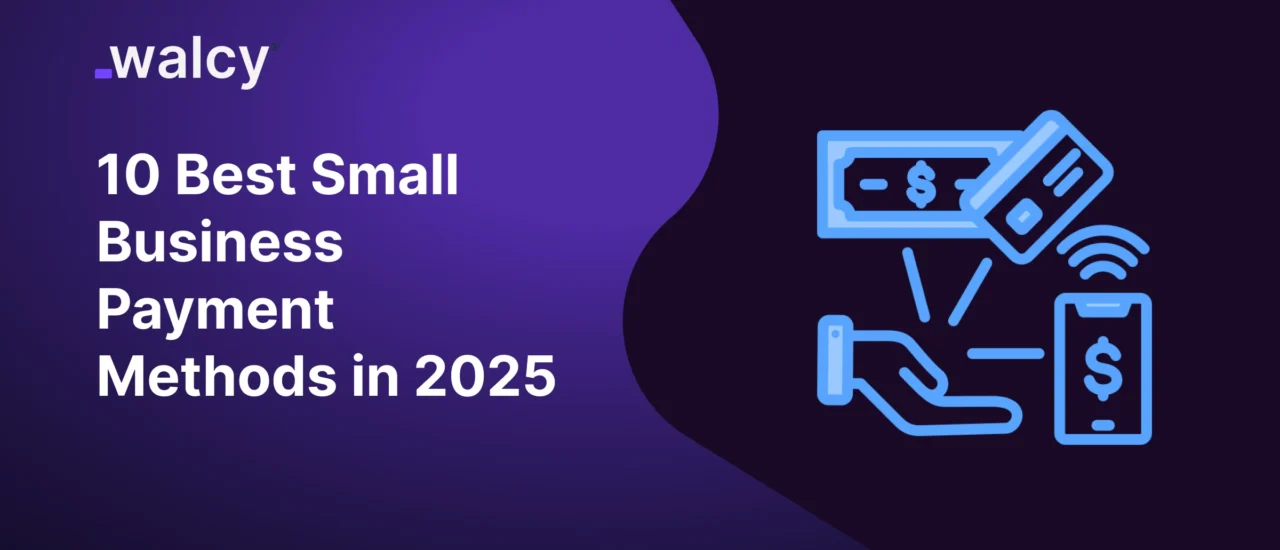Managing receipts for your business is a key concern for any small business.
As the head of technology progresses, so have the different ways small businesses get paid, moving from traditional methods to modern and innovative options that help to meet their needs.
A proper choice of means of payment boosts customers’ convenience, and cash flow improvement, and simplifies accountancy.
This guide explores the 10 best small business payment methods, including online payment options for small businesses, local payment methods, international payment methods, and both free and paid solutions.
10 Best Small Business Payment Methods
-
Cash Payments
Overview:
Cash payments remain one of the simplest and most traditional methods, particularly for small, local businesses.
This strategy is best suited for companies having a physical shopfront and need little setup.
Benefits:
- No transaction fees.
- Instant access to funds.
- It is very lenient on businesses operating in regions where digital means adoption is low.
Disadvantages:
- No paper trail for accounting purposes.
- The risk involved with handling and storing large volumes of cash.
Read about: Top Online Payment Methods Across The World.
-
Debit and Credit Card Payments
Overview:
Debit and credit card payments are an absolute necessity for most small businesses nowadays.
Portable POS machines and card readers make this system easy to set up and hence highly popular.
Benefits:
- Convenient for customers.
- Supports large volumes of transactions.
- Good option for both in-person and online transactions.
Cons:
- Fees per transaction (1%–3%).
- This includes hardware investment, such as a POS terminal.
Top Vendors:
- Square
- PayPal Here
- Stripe Terminal
-
Mobile Wallets
Overview:
Mobile wallets include options like Google Pay, Apple Pay, and Samsung Pay.
These wallets have also achieved momentum and provide fast and secure modes of paying for something.
Most customers need only tap their phones or smartwatches to complete transactions.
Benefits:
- Contactless and fast transactions.
- Increased security through tokenization and biometric authentication.
- appeals to tech-savvy customers
Disadvantages:
- Requires NFC-enabled devices.
- Adopted poorly by customers from specific demographics.
-
Bank Transfers (NEFT, RTGS, IMPS)
Overview:
Bank transfers are extremely popular for B2B transactions or businesses dealing in large-value transactions.
The availability of options to avail of services such as NEFT, RTGS, and IMPS has facilitated customers in making the transfer directly from their bank accounts.
Advantages:
- Low/no transaction charges
- Secure and reliable
- Suited for enterprises dealing in high-value transactions
Disadvantages:
- Time delay in certain cases
- Less convenient than using digital wallets or cards
Read about: NEFT Vs RTGS: Which Is Better?
-
Online Payment Gateways
Overview:
In turn, online payment gateways like PayPal, Stripe, and Razorpay are important on their own.
They facilitate direct payments from customers to your website or app.
Key Features/Advantages:
- International transaction support
- Multiple currency options can be chosen
- Easy integration with e-commerce platforms
Cons:
- Transaction fees depend on the provider.
- The free version allows limited customization.
Popular Gateways:
PayPal: Internationally recognized, buyer protection
Razorpay: Local payment options in India
Stripe: API-friendly for developers
Read about: What is a Payment Gateway? How It Works?
-
UPI (Unified Payments Interface)
This is the most prevalent mode of payment in India that enables instant money transfers through Google Pay, PhonePe, and Paytm applications.
Pros:
- Zero transaction fee for small transactions
- Transfers are instantaneous
- Greatly adopted in India
Cons:
- Applicable only where UPI is accepted
- Must have access to a smartphone
Read about: UPI International Transfer: Comprehensive Guide
-
Free Online Payment Methods for Small Businesses
Free-of-cost payment platforms are pretty adequate options for small businesses in which one can save costs.
Some of the major methods are: Google Pay for Business, Venmo for Business, and many more free payment platforms
Pros:
- Nil or very few charges
- Score high in implementation and ease of management
- Is not a bottleneck for small-scale business initiators.
Cons:
- Incapable of sustaining a larger amount of traffic/transactions
- Fewer features compared to paid solutions
-
Subscription-Based Payment Platforms
Overview:
Paid services, such as Shopify Payments or Zoho Payments offer high-class reporting, invoicing automation, and full integration with the business applications.
Pros:
- Full payment management.
- Advanced analytics and reporting
- Inventory and CRM integration.
Cons:
- A monthly/yearly subscription fee.
- Can also include transaction fees on top of subscription fees.
Read about: International Payment Fees | The Essential guide.
-
Cryptocurrency Payments
Overview:
The more tech-savvy the business, the more they’re likely to accept cryptocurrencies like Bitcoin or Ethereum.
For that, platforms such as Coinbase Commerce make it easy.
Pros:
Supports international transactions without currency conversion.
- Low transaction fees.
- Appeals to tech-savvy customers.
Cons:
- High volatility in cryptocurrency values.
- Limited adoption among mainstream customers.
-
Buy Now, Pay Later (BNPL)
Overview:
BNPL is offered by companies such as Klarna, Afterpay, and ZestMoney, which give consumers an option to pay in installments.
Pros:
- Incentivizes customers to make bigger purchases
- Payment flexibility for customers
- Popular for online shopping
Cons:
- Very high late payment charges for customers
- Businesses have to pay for BNPL services
Local Payment Methods
Various businesses operate in specific regions, and the demand for local payment methods makes it compulsory to include them.
Example:
- Paytm, PhonePe and MobiKwik in India
- Alipay and WeChat Pay in China
- Mpesa in Africa
Pros:
- Generally accepted in the local area.
- Transaction fees are low.
- Easy to implement by local businesses.
Disadvantages:
- The usability is very limited to international transactions.
Read about: All About Overseas Payments (2025); Comprehensive Guide
International Payment Methods
You’ll need international payment methods if your business sells to an international audience.
Good options include the following:
- Payoneer for freelancers and e-commerce
- Wise, previously known as TransferWise, for cheap currency exchange
- Stripe for those doing business globally
How to Choose the Best Payment Method for Your Small Business
You can choose in the following manner:
- Know Your Customers’ Preferences:
Understand what kind of payment options your target audience prefers.
Younger customers would prefer mobile wallets or BNPL options, while older customers might prefer cash or cards.
- Assess Costs:
Compare transaction fees, setup fees, and subscription charges to ensure the chosen method fits within your budget.
- Consider Scalability:
When the volumes increase, including internationally, you would have to be able to grow your business accordingly. You’ve got to ensure the chosen means scale with it.
- Pay greater attention to safety:
choose methods of payment strong in security means such as encryption, tokenization, and fraud-detecting tools.
- Assess your options for available integrations:
Assess solutions that can easily be integrated with your website, an accounting tool, and other tools you use within your business for seamless operations.
Read about: Major Types of Payment Fraud and How to Avoid Them?
Conclusion
The best small business payment methods will be key to ensuring customer satisfaction and, therefore, the smooth running of your business.
Options are endless, from more traditional ones like cash and cards to innovative solutions like mobile wallets and cryptocurrency.
Know your business type, transaction volume, and customer preference to choose the ideal method of payment.
If you choose rightly, you could streamline the process of paying, build trust with customers, and pay more attention to growing your business.
Do follow us on Facebook and LinkedIn, to stay connected with us.



